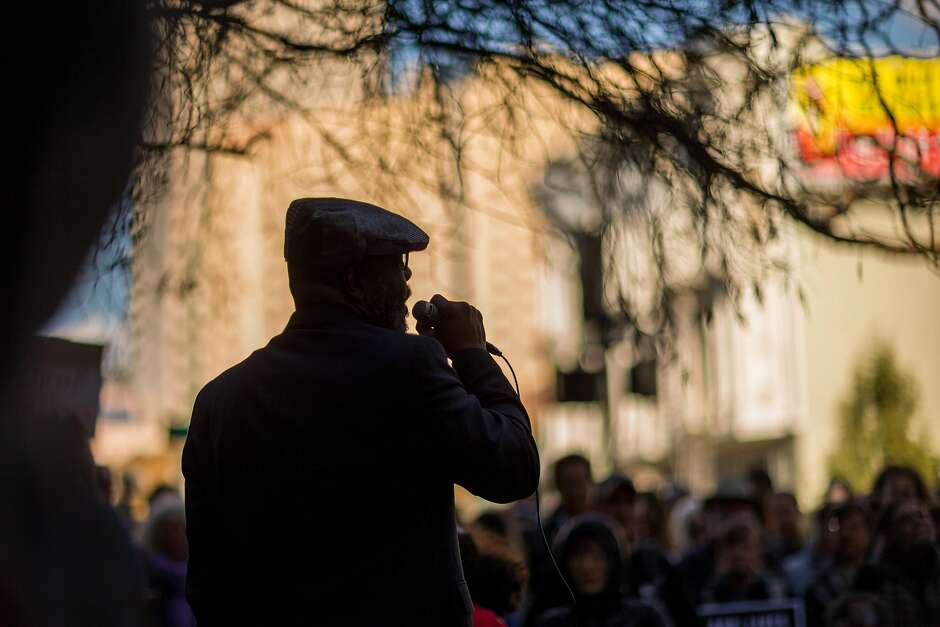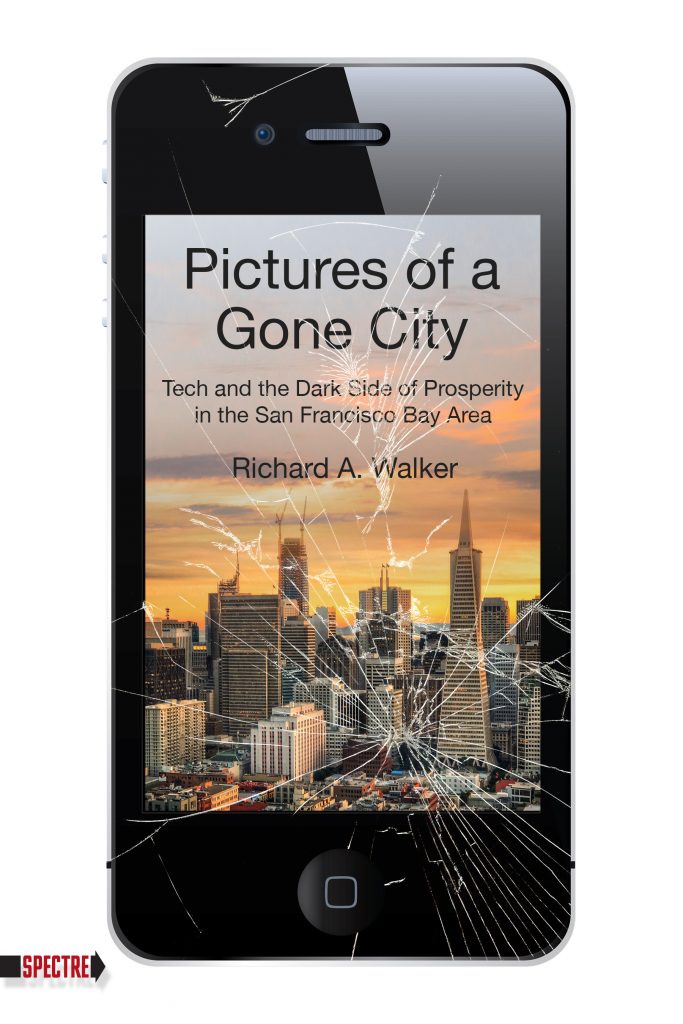
By Richard Walker
San Francisco Chronicle
August 31st, 2018
The Rev. BK Woodson talks to people gathered at the Alameda County District Attorney’s Office to protest the minimum wage and demand that the charges against the Black Friday 14 be dropped on Tuesday, Nov. 10, 2015 in Oakland, Calif.Photo: Nathaniel Y. Downes / The Chronicle
The Bay Area has gone through an astonishing growth spurt in the 2010s, with the region’s gross domestic product rising by nearly 50 percent from $323 billion in 2009 to $470 billion in 2016. The Bay Area is the unrivaled world leader in information technology, with the biggest concentration of firms, startups and risk capital. Silicon Valley now stretches around the bay and is home to the first trillion-dollar corporation, Apple, and corporate behemoths such as Google (Alphabet), Facebook and Salesforce.
The Bay Area economy is only 10 percent tech, however. Other thriving sectors are finance and management, hospitality and tourism, health, education, food and wine, transportation, wholesale, retail and government. There is an extraordinarily talented labor force, loads of high-skill jobs and large salaries for many. Income per person is nearly $100,000 — far ahead of any other metropolitan region in the world.
So what could be wrong? Quite a lot, it turns out.
Obscene enrichment: The Bay Area is in the vanguard of inequality, with more billionaires and more 1 percenters per square foot than any other U.S. region. The superrich are overwhelmingly white men, while the majority of workers are women and people of color.
The short straw: Wages for the bottom third of the workforce have been stagnant, despite low unemployment, and the (working) middle class is shrinking here, as elsewhere. Low wages are good business, including for tech firms — which hide it by subcontracting. Wages rise only when there is pushback by unions, living wage ordinances and immigrant rights advocates.
Sky-high housing: The Bay Area is one of the most expensive and unaffordable regions in the world. Housing is beyond the reach of all but the top 20 percent. Only the upper classes can pay to play in the bright, shiny new city by the bay. High rents are due chiefly to the bloated demand of a supercharged economy, fast-rising incomes and severe inequality.
Wholesale displacement: Hundreds of thousands of people have been displaced from their former homes. They move to the Bayview, to Oakland, and to the far extremities of the regional metropolis, from Dixon to Hollister. Tenant evictions are one nasty facet of the problem, tent cities of the homeless another. Yet even young people with prospects are finding it impossible to live here.
Uncontrolled sprawl: This is not your grandparents’ Bay Area of five counties or your parents’ version with nine; it is now officially 12 (Alameda, Contra Costa, Marin, Napa, San Benito, San Francisco, San Joaquin, San Mateo, Santa Clara, Santa Cruz, Solano and Sonoma counties). The region has its own Inland Empire, like Los Angeles, in the Central Valley and more long-distance commuting than anywhere. Traffic is a nightmare, and mass transit systems are overwhelmed.
Devouring resources: Despite the Bay Area’s record of conservation and progressive thinking about climate change, few are aware of the Bay Area’s enormous footprint and appetite for resources. Too little has been done to reduce water withdrawals from the Sacramento-San Joaquin River Delta and stop the governor’s twin-tunnels project, to curb urban expansion into wildfire zones and to take sea level rise seriously as cities keep building up and out.
Delusions of Tech World: First there was Silicon Valley Fever and then Dot-Com Madness, but there’s a new outbreak of hubris in Tech World. The lords of tech created new ways of working, socializing and knowing by means of iPhones, Google searches and Facebook friends, and made utopian promises of equality, information access and friendship. But they forgot to think through the dark side of their inventions, and their dreams are becoming our nightmares.
Political paralysis: The Bay Area tradition of progressive politics has frayed badly. Too many of the elite are self-satisfied, too many techies are naive libertarians, and too many activists end up in Portland, Ore. A shabby record of kowtowing to the tech industry puts local politicians in a poor position to lead the country forward. The Bay Area’s blue tilt is now mostly attributable to the new working class of color, which wants basic needs met, such as good education, health care and transit.
Remember, too, these are the good times. Every boom ends with a thud. The next crisis will hit the Bay Area hard, just as in 2000 and 2008. We may fail to learn from economic history, but we will not escape its harsh judgment.






